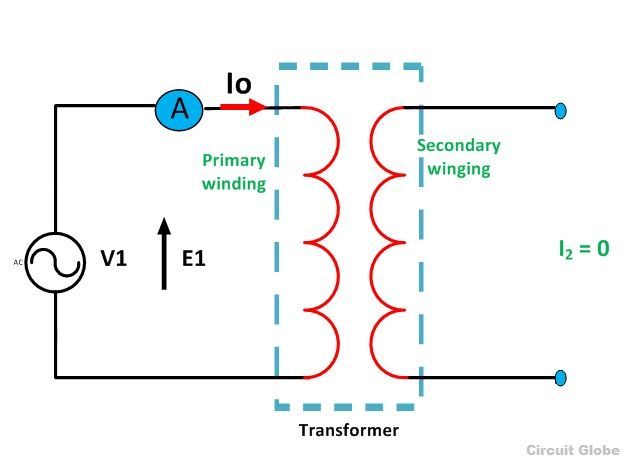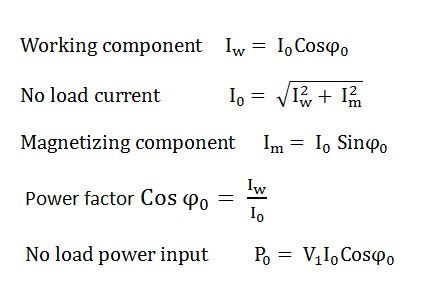AC MACHINES-1 (66761) Theory
Completion requirements
3. Interpret the principle of operation of transformer on no-load condition and load condition.
3.2. Define no-load voltage, current, mutual flux, no load power factor.
The no load voltage is the terminal voltage when zero current is drawn from the supply, that is, the open circuit terminal voltage. Power supply performance is measured in terms of percent voltage regulation, which indicates its ability to maintain a constant voltage.
The no-load current is small because the primary links with its own magnetic field and electromagnetic theory explains that this will induce a back-emf to oppose the voltage applied externally to the coil. The open circuit transformer therefore acts as a highly inductive choke with a power factor of some 0.15 lagging.

This current is responsible for supplying the iron losses (hysteresis and eddy current losses) in the core and a very small amount of copper losses in the primary winding. The angle of lag depends upon the losses in the transformer. The power factor is very low and varies from 0.1 to 0.15.
The no-load current consists of two components:
- Reactive or magnetizing component Im
(It is in quadrature with the applied voltage V1. It produces flux in the core and does not consume any power).
- Active or power component Iw, also know as a working component
(It is in phase with the applied voltage V1. It supplies the iron losses and a small amount of primary copper loss).
The following steps are given below to draw the phasor diagram:
- The function of the magnetizing component is to produce the magnetizing flux, and thus, it will be in phase with the flux.
- Induced emf in the primary and the secondary winding lags the flux ϕ by 90 degrees.
- The primary copper loss is neglected, and secondary current losses are zero as
I2 = 0.
Therefore, the current I0 lags behind the voltage vector V1 by an angle ϕ0 called the no-load power factor angle and is shown in the phasor diagram above. - The applied voltage V1 is drawn equal and opposite to the induced emf E1 because the difference between the two, at no load, is negligible.
- Active component Iw is drawn in phase with the applied voltage V1.
- The phasor sum of magnetizing current Im and the working current Iw g
 ives the no-load current I0.
ives the no-load current I0. From the phasor diagram drawn above, the following conclusions are made
From the phasor diagram drawn above, the following conclusions are made
This is all about transformer in no-load condition.
